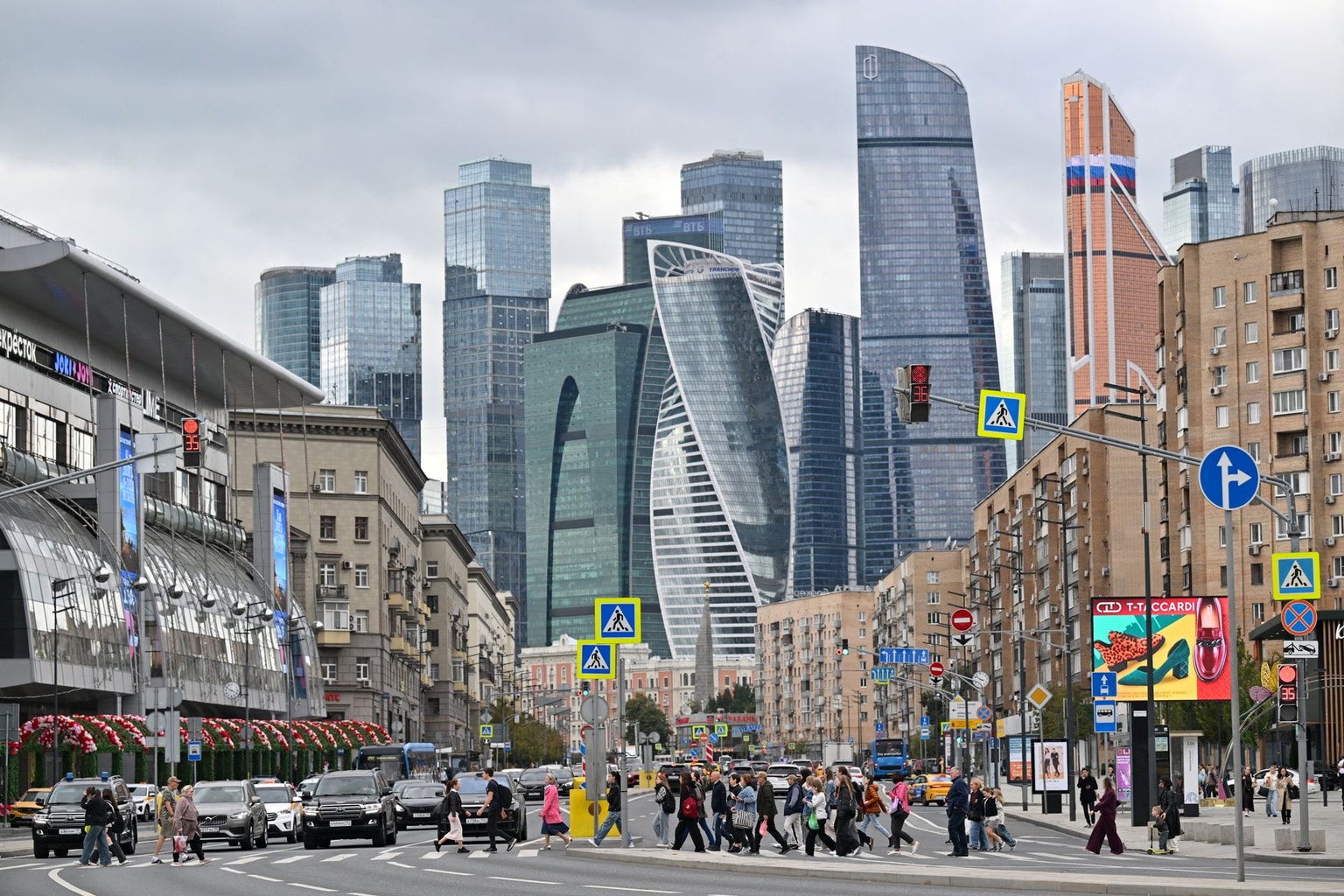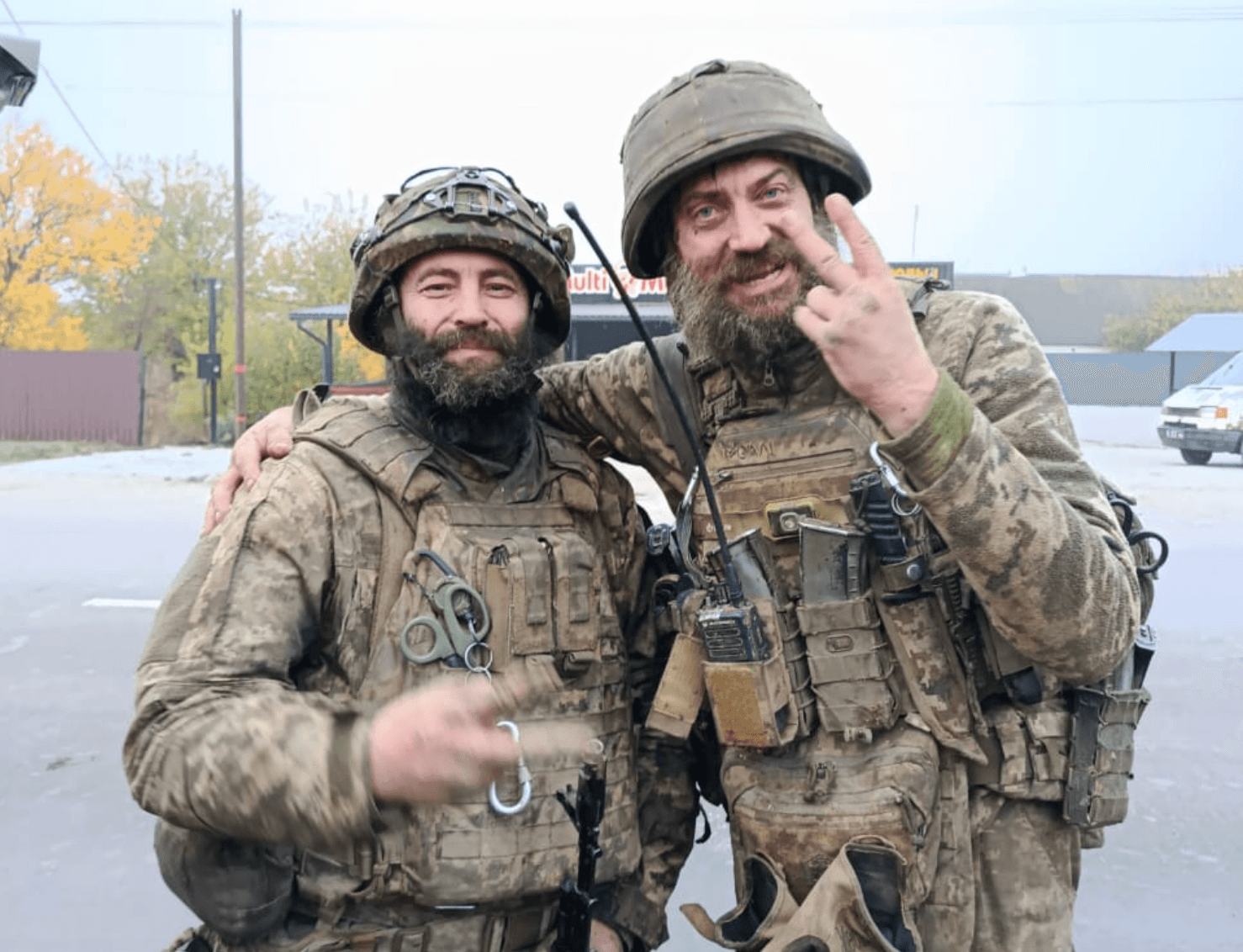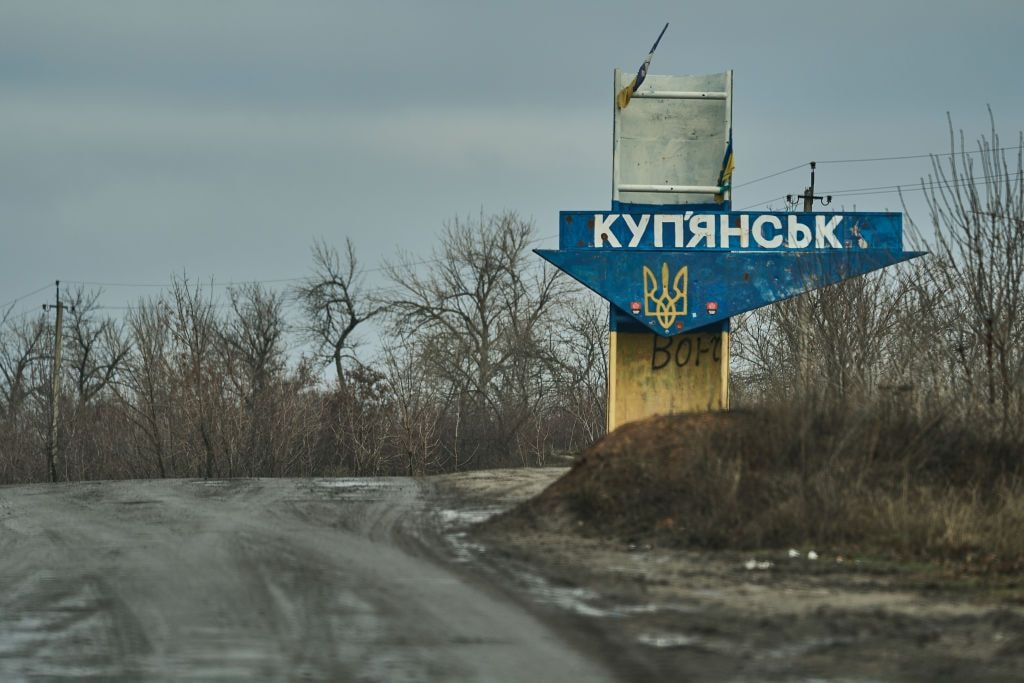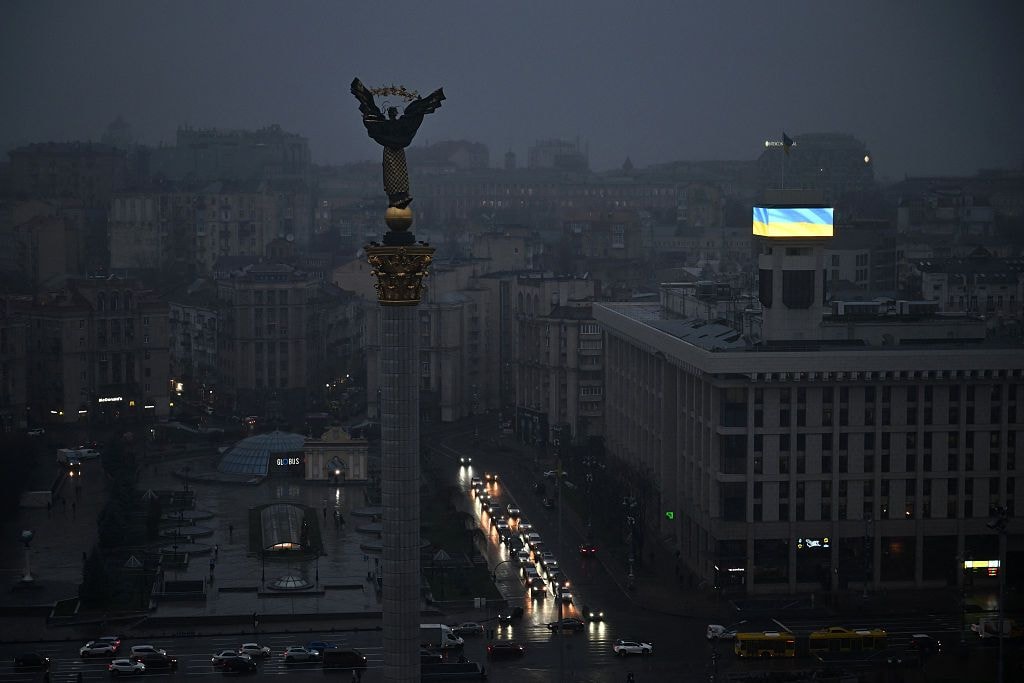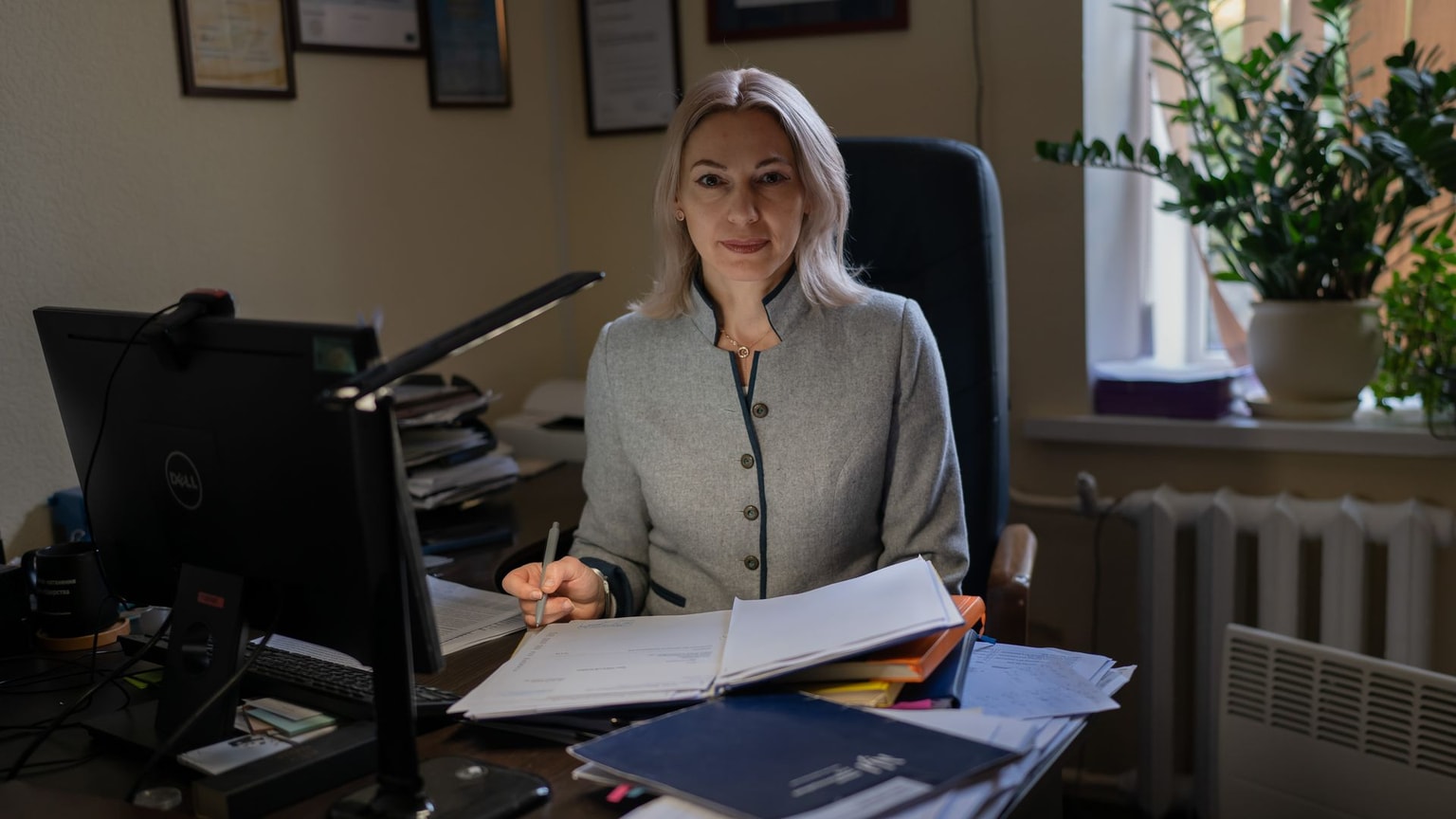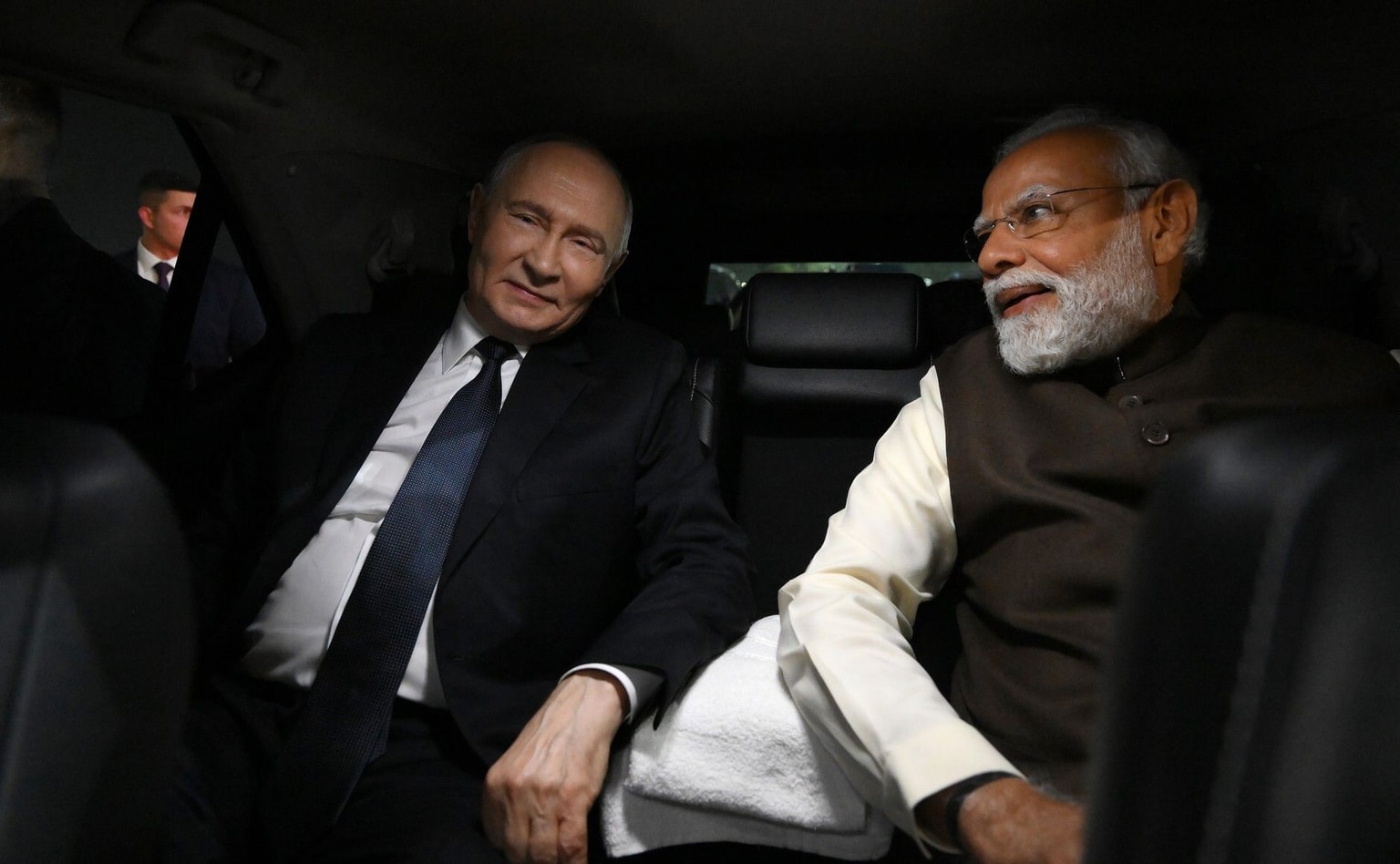
In bomb-shelter classrooms, Ukrainian university students turn to weapons engineering
Students of the Kharkiv Aviation Institute attend an FPV-drone class in an underground classroom in Kharkiv, Ukraine, on Oct. 27, 2025. (Serhii Korovayny / The Kyiv Independent)
In a basement firing range at the Kharkiv Aviation Institute, first-year student Anastasia Homel watches intently as her professor breaks down and reassembles an automatic rifle in front of her class.
It’s a snapshot of how the war has altered education and student life for students taking classes in bomb shelters after their campus came under Russian missile, drone and artillery strikes upward of 100 times since 2022, forcing lessons literally underground.
The university, also known as the KAI, is only 25 miles from the Russian border, not far from where Russia’s initial invasion wrapped around the ring road that curves along the northern reaches of Kharkiv, Ukraine’s second-largest city.


Homel’s early choices at KAI show how the war is reshaping what Ukrainian college students study. Just two months into her time at the institute, she chose to go into 3D modeling.
"I really like working with 3D programs. Descriptive geometry is pretty interesting; it’s totally different from normal mathematics," Homel said. That specialization, in turn, put her into the department of rocketry and aerospace, where some of her earliest assignments focused on drone and missile design.
Homel is by no means alone within KAI, nor is KAI alone within Ukraine. Higher education within Ukraine is undergoing a fundamental transformation.
The needs of the war effort and, particularly, Ukraine’s new defense industry are changing the job market for new graduates in Ukraine. Students of a techie bent are increasingly turning away from software development and toward hard engineering to deliver future weapons.
Open data from Ukraine’s Education and Science Ministry show that KAI in 2021 had 110 students, both full and part-time, specializing in software engineering. By 2024, that number had dropped to 52.
"What’s important is people who can both come up with new ideas and build them with their own hands."
As an aviation school, aerospace was always bigger at KAI. But the number of students enrolled in aviation and rocketry technology grew from 194 to 365 over the same timespan.
This is not unique to KAI, nor even to the relatively frontline education throughout Kharkiv. Even Kyiv Polytechnic University, one of the biggest contributors to Ukraine's massive IT industry, has seen its software engineering enrollment slip from 558 to 499.

Total enrollment in software engineering specialization across Ukrainian universities slipped from 5,968 to 5,279 from 2021 to 2024 — despite the fact that those programs are some of the easiest to do remotely, even from the safety of the EU.
Hard engineering specialization meanwhile spiked. Industrial machine engineering majors nationwide grew from 7,213 to 9,979. Electric Power Engineering, Electrical Engineering and Electromechanics from 11,591 to 14,011; Automation, which in the interval also grew to include robotics, increased from 5,183 to 6,130.

"Right now, what’s important is people who can both come up with new ideas and build them with their own hands," Andriy Bykov, a senior lecturer in IT and flight design at KAI, told the Kyiv Independent, showing off an underground laboratory full of flight simulators and computer numerical control (CNC) machines set out on beige tables in white-walled rooms — an aesthetic not unlike an Apple Store.
The change in education is moreover a leading indicator of a massive shift in a planned post-war economy — preparation for weapons tech’s metamorphosis from a survival mechanism to Ukraine’s next boom industry.
"They have changed fundamentally, and we are continuing to change them, because the war dictates its own terms and its own priorities," KAI Acting Rector Oleksiy Lytvynov told the Kyiv Independent, noting that they'd created new unmanned aerial vehicle (UAV)-related programs to encourage the trend.
At the universities of Ukraine in general, and Kharkiv in particular, war is in session.

New school rules
Kharkiv is a longstanding hub of Ukrainian academia. Prewar, the city’s 29 institutions of higher learning held such demographic sway that one in six residents was an active student. Karazin University is the oldest in Ukraine that was never shut down by either the Romanovs or the Soviets. Today, the smell of paint and sawdust wafts from Karazin’s main buildings across Freedom Square. Classes are restricted, but repairs from air strike damage — including the replacement of nearly all the windows — are underway.
Kharkiv has also been an aviation hub since more or less the arrival of the first airplane into the USSR. The Kharkiv Aviation Factory and surrounding educational facilities cropped up to serve the needs of Soviet aviation starting in 1926, with KAI following in 1930.
As with many Soviet industrial hubs, the Kharkiv Aviation Factory and Kharkiv business in general found itself stranded after the breakup of the Soviet Union, with production chains running through Moscow to the Urals and industrial centers all the way in Kazakhstan and Siberia. It was a slog to go it alone following decades of co-production with firms throughout Russia.

Following Russia’s initial 2014 invasion and the subsequent business decoupling, the aviation factory eked out a living on contracts to repair one or two planes at a time, though the government stopped reporting the government-owned firm's massive losses shortly thereafter. Shelling effectively destroyed the plant in 2022, even those orders stopped.
"We very much hope that soon after war's end, the Aviation Factory will be restored and will work with us once again as a whole united complex, since that's how it's always been," Lytvynov told the Kyiv Independent.
And yet the war has called for more air power, alongside a broader and insatiable demand for all species of things that go boom. But Ukraine’s aviation industry has shifted to unmanned vehicles, in large part because you can make a drone in a much smaller space than a fighter jet, making them a tougher target for Russians. Classes are more focused on these new genres of weaponry as well as the robotics necessary to produce them at scale.
In one KAI lecture the Kyiv Independent observed, a professor runs through a series of drones in various ways affixed to arms, demonstrating to his students the lifting power and gyroscopic stabilization of his small fleet of first-person view drones (FPVs).


The underground campus extends into workshops where students program computer numerical control machines — basically lathes, routers and die casts run by code. Some of them work their way through sheets of wood destined to become models of prospective aircraft. There are flight simulators, as well as an experimental eye-in-the-sky module for a fixed-wing drone in the shape of a MiG fighter plane.
Elsewhere on campus, a museum houses examples of virtually every turbine engine known to man, as well as Da Vinci-esque diagrams of their insides. They are particularly heavy on the Soviet models that were Kharkiv's stock-in-trade until recently — a MiG fighter plane still greets visitors as they enter the campus.
But this is not a place devoted to nostalgia: Ukraine aims to turn next-generation unmanned aviation into an industry it can claim as its own, not a Soviet hand-me-down.
Changing times and frequencies
The Kharkiv National University of Radioelectronics opened its doors 95 years ago. Yuriy Yevhenovych Khoroshaylo graduated from the radioelectronic university in 1975. Khoroshaylo returned to his alma mater as a professor in 2009. Today he leads the electronic device design and operation department.
In a gray wool sport coat and carrying a well-conditioned leather briefcase, Khoroshaylo was dapper but winded as he strode through an arsenal of Soviet-era machining equipment gathering dust in a wide unlit hall in the bowels of the radioelectronic university’s main building.
In a separate and sunlit wing of the university, Khoroshaylo’s office doubles as a smaller workshop for newer wares. A recent graduate built a 3D printer that sits on a desk next to assorted UAV frames.
The small workspace also features a smattering of broken Ukrainian FPVs and a small collection of downed Russian drones that they run diagnostics on.

"We repair these and send them to our guys," he told the Kyiv Independent. "Here is a trophy, the wreckage of a Geran."
The team has also developed hardware, like transmitters that sit on a desk that has been turned into a workbench. On his walls, Khoroshaylo proudly displays two patents they got for drone components last year, adding, "and this year we're getting two more."
The radioelectronic university has a long history of tactical pivots to follow national needs. It began in 1930 as a center for sound technology for mining. As the 20th century progressed, that expanded into radio work of all kinds, particularly the USSR’s electronic warfare apparatus.
Following the collapse of the USSR, IT outsourcing became a pillar of an independent Ukrainian economy, building a new middle class outside of traditional heavy industries by coding for Western clients. There’s a gray bronze statue, a monument to "The Programmer," that sits with its laptop on a bench staring pensively into space directly in front of the university’s main entrance.
"The fact of the matter is that for the past maybe 20 years, the main focus has been on informational technologies, because the salary for any programmer or site developer was significantly higher than for an engineer," Denys Horelov told the Kyiv Independent. Himself an alumnus of Kharkiv National University of Radioelectronics, Horelov today heads the department of IT engineering equipment.

One major obstacle is a persistent lack of equipment. "To train an IT specialist, you just need a laptop, whereas to train an engineer, you need practical training," Horelov said, speaking from a practicum lesson where a half-dozen first-year students fiddled with antennas, trying to pick up radio signals. Horelov laments that their detectors — a gift from graduates now working in Germany — only work up to six gigahertz.
"The most interesting spectrum for us today is the X-band — 8 to 12 gigahertz," said Horelov. "If you’re talking about developing the most modern things, the one problem we have — we don’t have enough modern instrumentation and control devices."
A more fundamental problem is domestic production of components ranging from chips and transmitters to cameras and inertial guidance systems. Horelov sees Ukraine trying to address it by training a new generation of young people who build things. "There’s a huge demand starting for engineers and now the focus on IT is diminishing. The young generation — the freshmen — they’re looking at those who are planning to link their futures with Ukraine."
"Any nation — and Ukraine is just one example — but any nation has to be not only politically, not just economically, but also technologically independent," Horelov continued.
"A student now understands that actually engineering majors have a better outlook today, since in fact it will be up to our students in three, four, five years to rebuild the country."


